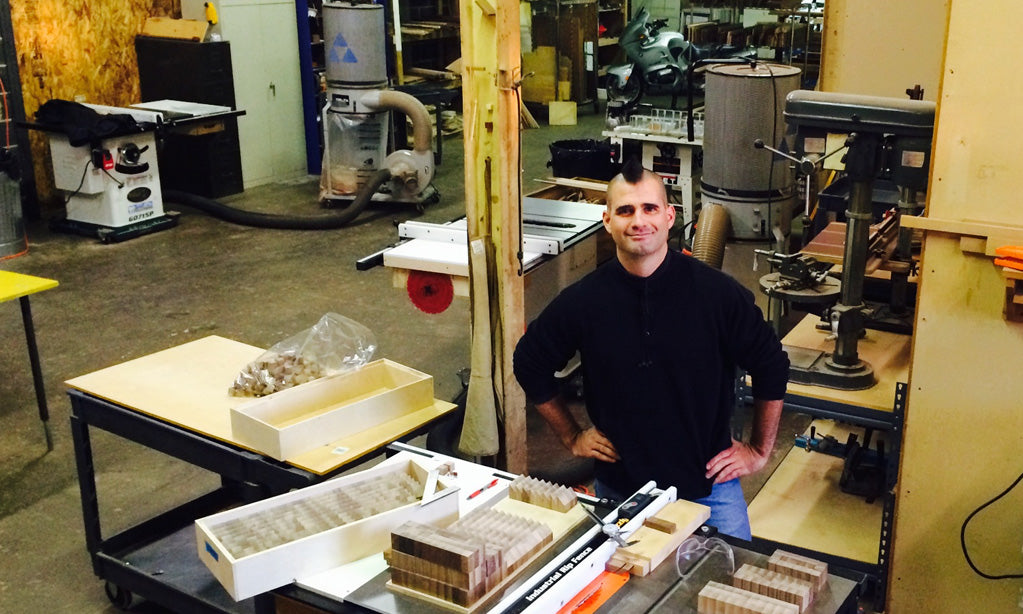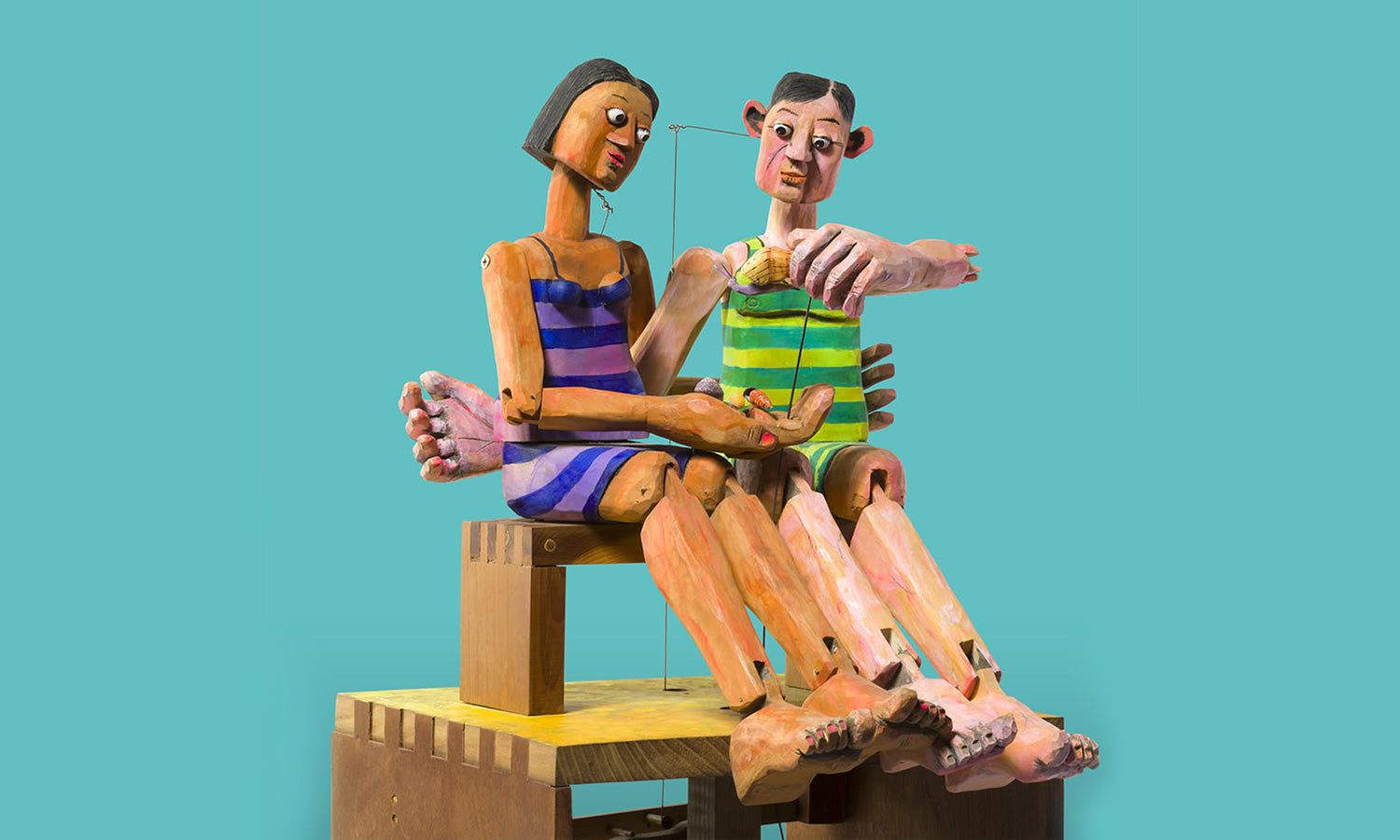Art of Play is proud to announce our partnership with Eric Fuller of Cubic Dissections. Eric is one of the most respected puzzle makers in the world because of his attention to detail, design and quality. We'll be offering exclusive access to some of his most famous pieces—american made, hand crafted puzzles that are built to last. The designs he chooses to produce are ingenious and the limited quantities he builds means that most are destined to become collector's items. We recently sat down with Eric in his workshop in Raleigh, North Carolina for a brief Q&A:
There are only a handful of famous puzzlemakers in the world. How did you find yourself in such an unusual profession?
Happenstance, really. I lived in San Diego and was an IT professional in the early 2000’s. I got hooked on puzzle collecting after randomly buying a 27 move Japanese box on Ebay. Because there are so few puzzlemakers out there, a lot of the puzzles I would see online were sold out and unobtainable. I started making basic six piece burrs on my kitchen table with a miter saw and chisel, had no idea what I was doing but to my surprise they turned out all right. Soon I was trading with other collectors and then selling to them. I moved out of my apartment into a small house with a one car garage and set up a real woodworking shop and became obsessed with making puzzles. When I moved to North Carolina in 2004 the cost of living was much lower and I gave full time puzzlemaking shot.
What appeals to you specifically about working with wood?
The fact that it’s an art. Metal and plastic are homogenous – a piece of aluminum will react predictably when milled. Wood is not like that. Each plank is different, with a unique shape and internal stresses that are released every cut you make. In order to make precision puzzles, each plank must first be milled from its curved, twisted and bent rough shape into a perfectly flat and square plank. Then you rip a stick from the plank and everything moves again as those stresses are released. It’s a constant battle, nothing is ever the same way twice, and it’s a real challenge to master. That’s why you can buy cheap and accurate metal and plastic puzzles, but quality wood puzzles will always demand a premium. The skill involved in making them is a barrier to entry that’s built into the material itself.
Mechanical puzzles have been around for thousands of years, why do you think they've endured the test of time?
Because they’re fascinating and some people really get a lot out of making order from chaos. The ah-ha you get from solving them is a real accomplishment, and in a way it’s like battling wits with the designer. Furthermore, the nicely crafted ones are works of art in their own right.
What is the difference between a good puzzle and a great puzzle?
Depends on if you’re talking about the design or the production.
Design wise, good puzzles take advantage of assumptions the solver is making. Great puzzles will create those assumptions and then use them against the solver. Great puzzles can also do something unexpected or tricky…a really great puzzle can even be witty or humorous in solution.
Production wise the difference between a quality puzzle and the rest is huge. Junk puzzles are inaccurate, and frequently glued up in the solved state. That means when you take them apart and try to put them back together, the fit between the pieces will reveal the solution…the wrong placement or orientation will not fit well. Shoddy worksmanship literally ruins the puzzle.
The only way to make a great puzzle is to maintain absolute accuracy in all angles and dimensions. This is very tricky when the wood moves every time you cut it. Quality puzzles tend to be largely milled from solid pieces of wood for strength and beauty…cheap puzzles will have more smaller pieces glued together which introduces the potential for failure over time. Finally, quality puzzles will use traditional woodworking joinery to make long lasting joints between pieces. Wood never stops moving with humidity and temperature, and over time will stress and ultimately break inferior joinery. The most common thing I see with cheap wood puzzles are sticks glued end grain to side grain. This is a poor joint and will likely fail since it was almost certainly not clamped when glued. A quality puzzle will use joinery such as shoulders and splines to reinforce the joint and create a truly heirloom piece.
How can puzzles help make the world a better place?
By teaching patience, ingenuity, logic and determination to those who attempt them. Also, playing with puzzles makes you more attractive, skinny, confident and alluring. That’s simply a fact – ask any puzzlemaker!












2 comments
Leave a comment
This site is protected by hCaptcha and the hCaptcha Privacy Policy and Terms of Service apply.